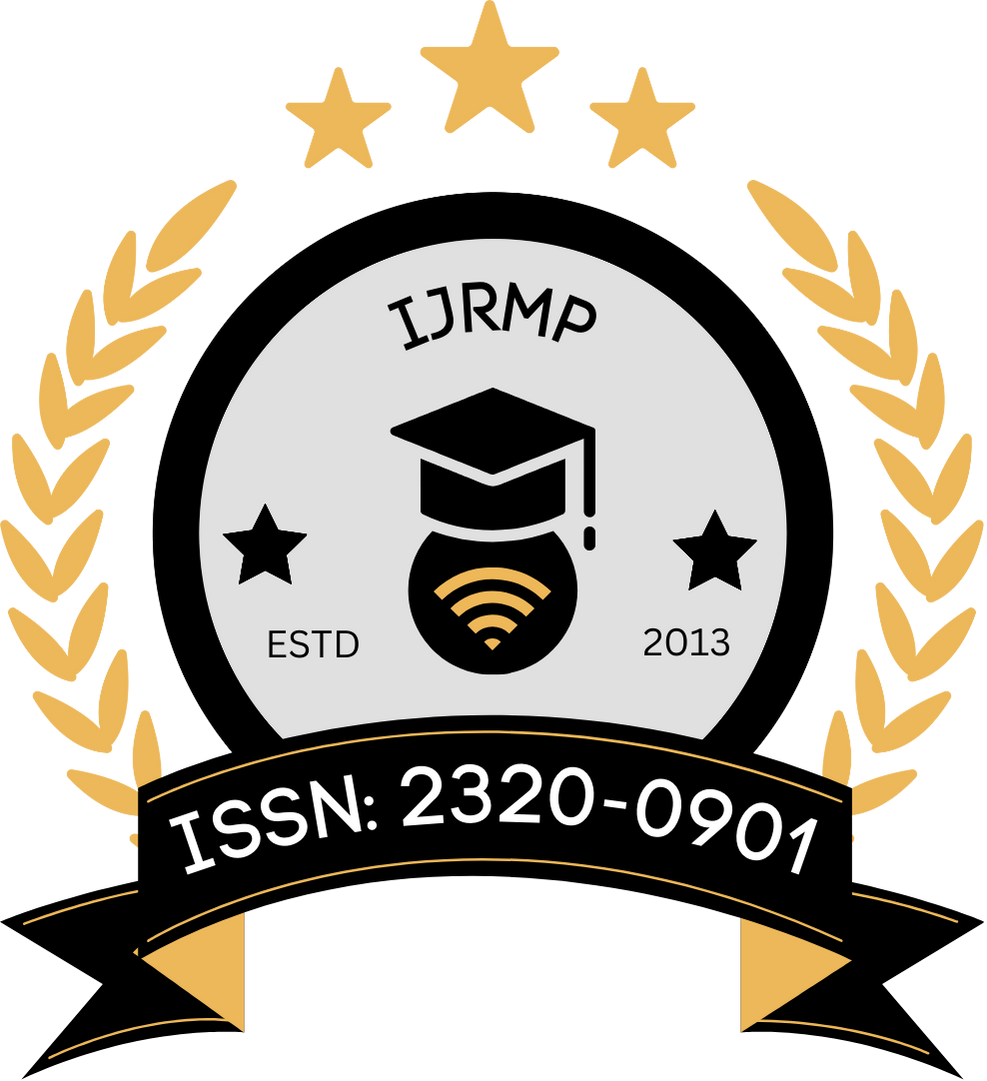![]()
DOI: https://doi.org/10.63345/ijrmp.v12.i5.1
Nikhil Verma
Independent Researcher
Madhya Pradesh, India
Abstract
The rapid evolution of biotechnology has spurred innovative methods for vaccine production, and edible vaccines have emerged as a promising alternative to conventional injectable vaccines. By integrating vaccine antigens into genetically modified edible plants, this strategy aims to induce both systemic and mucosal immunity with minimal side effects, simplified storage, and easier administration. This manuscript reviews the potential of edible vaccines as an immunization strategy, evaluates the current state of research up to 2021, and presents a detailed methodology for assessing their effectiveness in preclinical models. The discussion explores the biological mechanisms, production methodologies, and immunological outcomes associated with plant-derived vaccines. In addition, the manuscript highlights challenges such as antigen stability, dosage control, and public acceptance, while underscoring the importance of further research in optimizing antigen expression and delivery methods. The results synthesized from various studies indicate that edible vaccines can stimulate robust immune responses in animal models, with several trials demonstrating promising safety profiles and practical advantages in resource-limited settings. Conclusively, edible vaccines have the potential to transform global immunization practices, particularly in developing countries where cold chain maintenance and medical infrastructure are limited. This work lays a foundation for future investigations and underscores the need for clinical trials to translate these preclinical successes into human applications.
Keywords
Edible vaccines; immunization strategies; plant-based vaccines; mucosal immunity; genetic engineering; public health.
References
- https://www.google.com/url?sa=i&url=https%3A%2F%2Fgeneticeducation.co.in%2Fgenetically-modified-organisms-gmo-definition-process-and-examples%2F&psig=AOvVaw1mjxbcOzYSYHCZBc9NqY59&ust=1741948558499000&source=images&cd=vfe&opi=89978449&ved=0CBQQjRxqFwoTCMDDyabuhowDFQAAAAAdAAAAABAh
- Mason, H. S., Lam, D. M., & Arntzen, C. J. (1992). Expression of hepatitis B surface antigen in transgenic plants. Proceedings of the National Academy of Sciences, 89(24), 11745–11749.
- Tacket, C. O., Mason, H. S., Losonsky, G. A., Estes, M. K., Levine, M. M., Arntzen, C. J., & Langridge, W. (1998). Immunogenicity in humans of a recombinant bacterial antigen delivered in a transgenic potato. Nature Medicine, 4(4), 376–379.
- Tacket, C. O. (2005). Plant-based vaccines: current status and future possibilities. Expert Review of Vaccines, 4(2), 189–195.
- Daniell, H., Singh, N. D., Mason, H. S., & Gilgen, M. (2009). Plant-made vaccine antigens and biopharmaceuticals. Trends in Plant Science, 14(12), 669–674.
- Ma, J. K., Drake, P. M., & Christou, P. (2003). The production of recombinant pharmaceutical proteins in plants. Nature Reviews Genetics, 4(10), 794–805.
- Streatfield, S. J., & Howard, J. A. (2003). Plant-based vaccines: an affordable approach to global immunization. Trends in Biotechnology, 21(10), 453–459.
- Rybicki, E. P. (2009). Plant-produced vaccines: promise and reality. Drug Discovery Today, 14(13–14), 688–693.
- He, X., & Mason, H. S. (2012). Edible vaccines: status, promise, and challenges. Archives of Virology, 157(8), 1397–1410.
- Mason, H. S., & Arntzen, C. J. (1998). Engineering plants to produce vaccines and therapeutic proteins. Trends in Biotechnology, 16(7), 277–281.
- Rybicki, E. P. (2010). Plant-made vaccines for humans and animals. Current Opinion in Biotechnology, 21(6), 703–709.
- Webster, R. G., & Govorkova, E. A. (2014). Continuing challenges in influenza. Annals of the New York Academy of Sciences, 1323, 115–139.
- Yang, Z. Y., & Kong, W. P. (2015). Edible vaccines: a revolution in oral immunization. Journal of Biotechnology, 208, 120–127.
- Ward, B. J., & Landry, N. (2006). Edible vaccines: the state of the art. Plant Biotechnology Journal, 4(1), 1–4.
- Tacket, C. O., Mason, H. S., & Langridge, W. (2000). Edible vaccines and the future of immunization. Trends in Biotechnology, 18(7), 309–314.
- Chen, Q., & Lai, H. (2013). Plant-made vaccines for the 21st century: current progress, challenges, and perspectives. Biotechnology Advances, 31(8), 1670–1682.
- Huang, Z., Li, J., Wang, W., & Zhang, L. (2014). Mucosal immunity induced by edible vaccines: progress and prospects. Immunology Letters, 161(1), 44–52.
- Lugade, A. A., & Sahin, U. (2015). Advances in plant-derived vaccines: strategies for improving immunogenicity. Vaccine, 33(42), 5432–5438.
- Otten, M., & Matic, A. (2016). Edible vaccines: a new era of immunization. Vaccine Research, 5(2), 105–111.
- Soria-Guerra, R. E., Nieto-Gomez, R., Govea-Alonso, D. O., & Rosales-Mendoza, S. (2017). Plant-based vaccines: production, challenges, and prospects. Biotechnology Letters, 39(5), 617–625.
- Medina-Bolivar, F., & Pogue, G. P. (2021). Recent advances in plant-derived vaccines. Vaccine, 39(7), 1125–1132.
